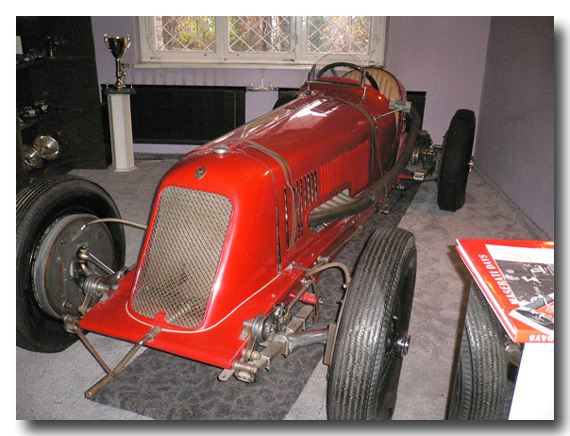
And in the office was the missing Maserati 8CM, s/n 3015. Hasler photo.
The Maserati 3015 – The Complete History by Bernhard Brägger, Forward by Simon Moore
Schmidgasse Buchhandler Publishing, 2012; 180 pages, 170 photos, 12 by 9.25 inches
135 Euros ($176) plus shipping
20% OFF PRICE OF 135 EUROS (110 Euros, $140) FOR VELOCETODAY READERS! ORDER FROM THE WEBSITE BELOW AND STATE THAT YOU HAVE READ OUR REVIEW IN VELOCETODAY TO QUALIFY FOR DISCOUNT.
Available from: maserati3015.com
Review by Pete Vack
The story of Maserati 3015 is not the first Single Chassis Book (SCB) we’ve read, but it competes well with Mark Sonnery’s Ferrari Breadvan for being the best, at least within the narrow realm of our focus and experience. Two others have recently come to our attention; the Kelly Vignale Corvette, which we reviewed earlier, and Lancia Dagrada, which we have yet to review. Denis Jenkinson probably got the whole ball rolling in 1987 when he wrote Maserati 3011, the story of the Whitney Straight 8CM. Therefore, Maserati 3015 is the second book published (to our knowledge) about a specific Maserati 8CM chassis.
Maserati 3015 – The Complete History is published by Schmidgasse Buchhandler, and written by Bernhard Brägger, a Swiss historian who is well known as the organizer of the Klausenpass Race Revival. It is impressively done, with a bronze-colored chassis plate embossed on the 12 inch by 9.25 inch horizontal hard cover. It lacks a dust jacket or slipcover. With 180 pages and about 170 illustrations it is not massive but large enough to cover the subject matter. At $176 (135 Euro), it is reasonably priced for a book limited to 1000 copies; 600 in English and 400 in German. The book traces the wonderful, colorful history of a single 1934 Maserati 8CM, chassis 3015, and does so with taste, accomplishment and accuracy.
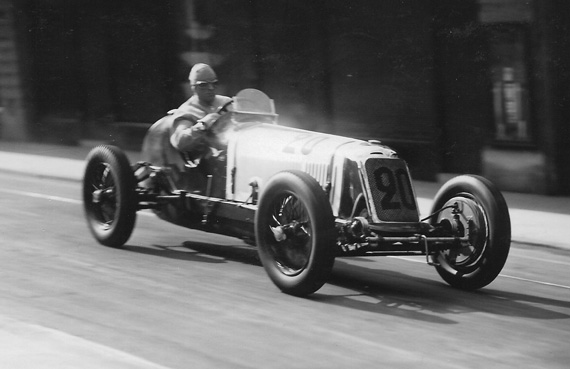
Glory Days – Benoit Falchetto driving 3015 at the one and only Grand Prix of Montreux for Ecurie Braillard. Credit Museé Montreux.
Documenting a Treasure
It is largely up to the owners to gather information on the cars in their collections, and furthermore to have someone (like Brägger) sort, investigate, research, confirm and write the history of the owner’s car. Museums such as the Simeone Foundation and the Mullin Museum often do the same job but with brief histories in a large book format. But the advent of self- publishing firms in the past few years has made it easier to produce low-volume high-quality books and they are now becoming more common. The placement of an unbiased writer or editor is critical, as history is all too often the victim of an overabundance of enthusiasm and an eye on market value rather than accuracy. I’d beware of SCBs that read like an auction house catalog.
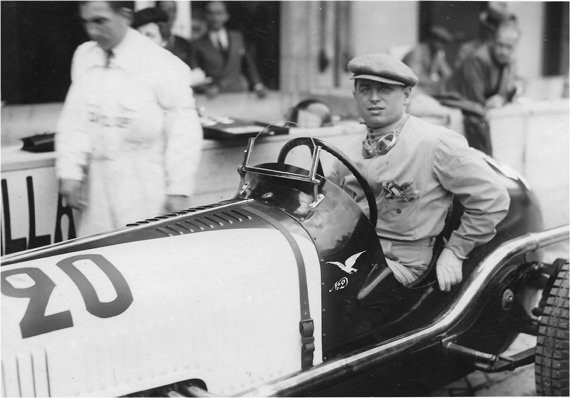
Falchetto was a good race driver but would go down in history as Isadora Duncan’s last lover. Credit Museé Montreux.
This is not the case for the story of 3015 however. In our opinion, Brägger has done an excellent job ferreting out the history of 3015; he has gone to the original sources wherever possible, used magazines, newspapers, programs and books to double check facts known about 3015; he has listed all such resources in a fairly comprehensive bibliography but there are no footnotes or indexes. Although most of the information is new, we have no reason to doubt its veracity and no questionable claims have been made in reference to the car’s successes or owners.
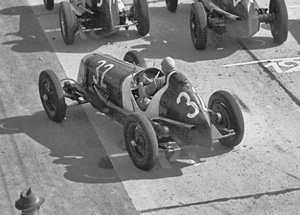
By 1937 at the Masaryk Grand Prix, 3015 had a streamlined headrest fairing, which made it easy to identify. Credit Adam Ferrington.
There is little reason to hype its history though, because the story of 3015, while not as impressive as the Nuvolari or Whitney Straight machines, is nevertheless filled with the hopes and dreams of a series of owners/drivers that spanned some 47 years from 1934 to 1980.
The story begins in mid-2006, when Bugatti Type 35 owner Kurt Hasler was approached by a stranger who told him that a friend owned a car similar to the Bugatti, a Maserati with an eight cylinder engine. Although Hasler was given a good description of the car at the time, he was too busy to follow up until he received a letter from Hungary with photos and more details of the car. It was enough information for Maserati and Bugatti historian Hans Matti to confirm that it was indeed the ‘missing’ Type 8C, chassis number 3015. That got Hasler going, and in December of 2006 he was in an office-like living room in the basement of a villa in Hungary, staring at the Maserati 8CM 3015.
It’s a great start to a wonderful story that just keeps getting better and better. Once the new darling of Ecurie Braillard of Paris, 3015’s history includes a range of characters from Tazio Nuvolari to Isadora Duncan and her boyfriend, and amazingly, to Indy 500 winner Peter De Paulo. We were somewhat surprised to find our that de Paolo had a severe accident in Europe driving a Maserati, and even more surprised to find out it was while driving 3015. Brägger finds de Paolo’s autobiography and enough evidence to substantiate the claim.
While most of the 8CMs stayed either in Europe or in Great Britain (three alone to Whitney Straight in the UK), after the breakup of Ecurie Braillard, (organized and run by Nelly Braillard) 3015 fell into the hands of a Hungarian count, and the car stayed in Hungary during and after the War. The Iron Curtain fell and it went unseen by the west until 1988, when it made a brief appearance at a vintage car event in Austria. It again went into hiding until found by Hasler in 2006.
The Fastest Car in Hungary
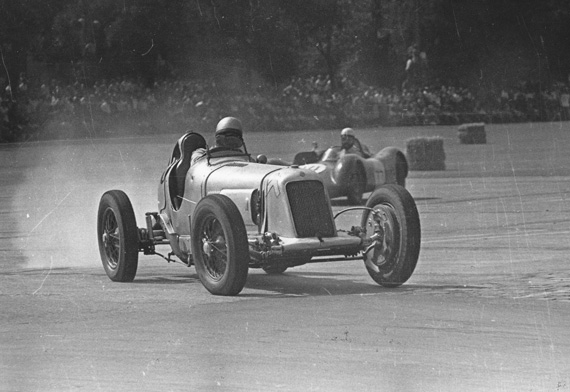
Racing in Budapest during the years of Communism, 3015 had little trouble winning over more modern cars. Credit Ervin Eszterváry.
Unlike most of the other 8CMs, because 3015 spent its post war years in Hungary, it had a longer competitive life than others. Since it was still a faster car than most of the Communist bloc cars at the time, 3015 continued to race and win in minor events up until 1957. Brägger tells the complete story of the car and includes historical photographs every step of the way.
There seems little doubt that 3015 deserves to be the subject of a book, for its history reflects the turmoil in France during the 1930s, Hungary before Hitler and later under Communist control, the Hungarian revolution of 1956 and the fall of the Communist governments in the late 1980s. Brägger cites these social forces throughout the book, bringing the life of 3015 into focus in an interesting manner. If cars could talk 3015 would be a great witness to the history of the 20th century.
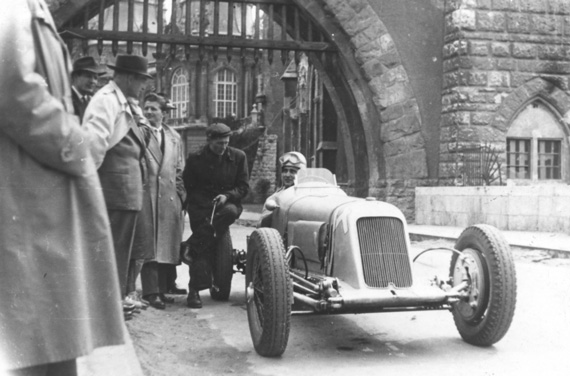
1957, Budapest City Park; Tibor Széles with 3015, hailed as the fastest car in Hungary. Credit Pal Negyesi.
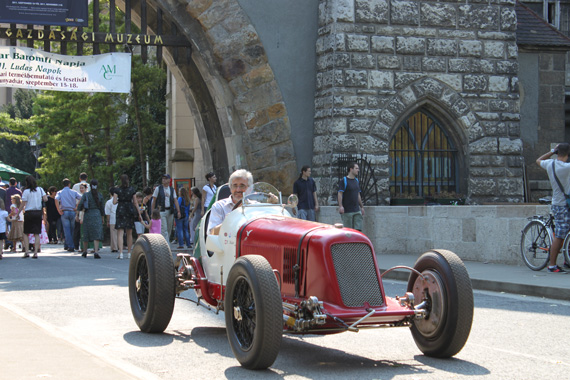
Fifty four years later in a free Budapest, Kurt Hasler poses with the car at the same spot. Credit Bernhard Brägger.
Part of the book is devoted to detailing the restoration. No doubt Hasler wanted to keep it as original as possible, but that proved to be a pipe dream as the chassis and engine were dismantled. A new supercharger had to be made up, as well as a new crankshaft and pistons. The transmission and rear end (equipped with a quick-change ratio device) needed only new bearings. The chassis needed attention but the body, aside from a new rear streamlined fairing needed only paint.
Along the way, Hasler decided to restore it to its 1937 form, when owned by the Hungarian count. Hence the use of the streamlined headrest fairing and the paint in Hungarian racing colors of red, white and green.
The story, historical photographs, comprehensive research and contemporary photos rank high on our charts. Maserati literature, while growing, is still sparse so this is a must-have for Maserati enthusiasts as well as pre-war historians. On the downside, the captions are often written in the past tense, and while the text is a decent translation from Bragger’s German, there are a few clunkers and several misspelled words.
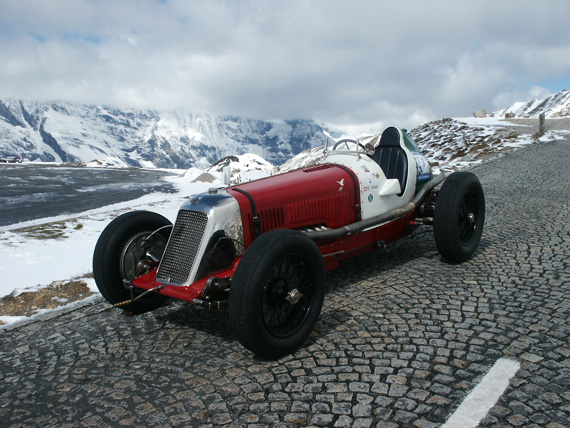
Not in the book, but we couldn't resist this fantastic photo of 3015 as it is today. Stunning photography by owner Kurt Hasler.
20% OFF PRICE OF 135 EUROS (110 Euros, $140) FOR VELOCETODAY READERS! ORDER FROM THE WEBSITE BELOW AND STATE THAT YOU HAVE READ OUR REVIEW IN VELOCETODAY TO QUALIFY FOR DISCOUNT.
Available from: maserati3015.com
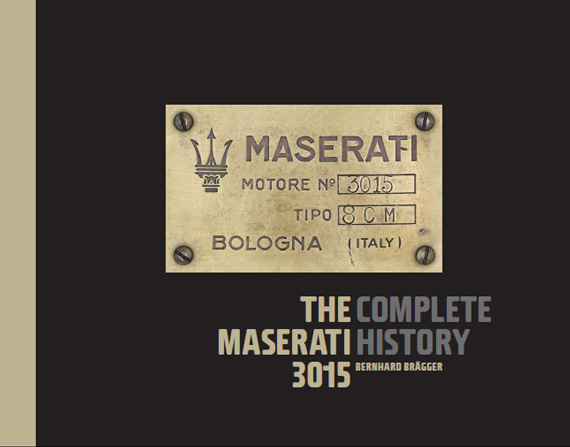
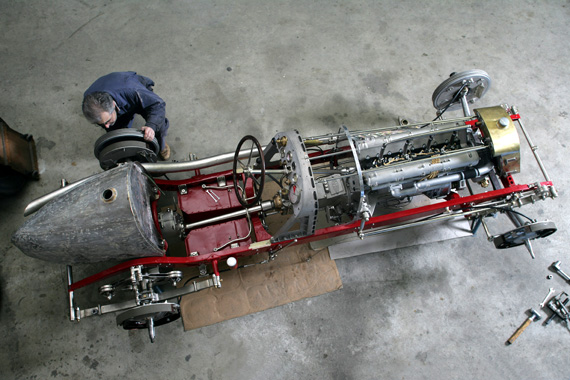
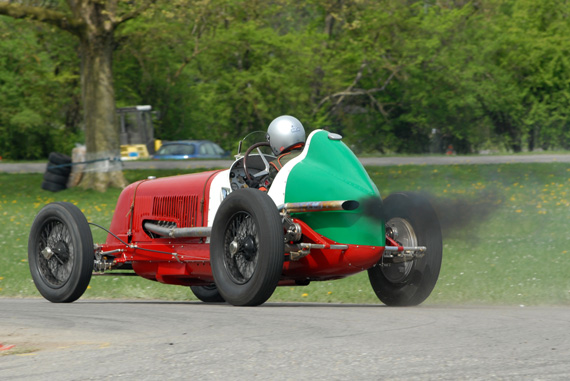
Having witnessed a Concours restoration of a 6CM the details of this 8CM must be very exciting. Now I just have to get somebody with both a 6CM and 8CM to purchase the reading material. Great article.
Pete, I was priveledged to be Historian of the Collection that owned 3006 when she earned 2nd place in the “open wheel race car class” atPebb le Bea ch in 2O10.
Thank you for this fantastic journey into the world o f 8cms as Veloce Today has once again opened a window in time for all to get a superb glimpse of the grand age of Scudereria Maserati.
Robert Stephen Piltch
Scottsdale, Arizona
Nice review, thanks Pete!
Another Single Chassis Book is Borgeson’s “The Last Great Miller: The Four Wheel Drive Indy Car”. The car was kept by the original owners, the Four Wheel Drive Company of Wisconsin, until sometime around 1980, along with a treasure trove of original correspondence between Harry Miller and the company. The bo0k includes a great deal of this correspondence. The car was far ahead of its time, including the 4wd drive system with lockable center differential–think Audi Quattro…in 1932.
Veloce Today, every week, comes up with the best stories and pictures on classic racing. The 8CM Maser story in Hungary was over the top. So wonderful to know that passion again saved a fantastic car from the ravages of war. Thank you to all involved. Peter Brock
I had the pleasure of racing against Peter Giddings and #3011 in a 1989 vintage race in San Diego, California. My car was the 1914 Tahis Special. For some reason Peter didn’t consider me much of a threat. At least when you are getting lapped, you get to race with the winner at least once. The 8CM Maseratis are, indeed, impressive automobiles.
Randy Reed